While location pages are a crucial aspect of multi-location SEO for both large corporations and small businesses, they may be difficult to optimize. They shouldn’t offer prospective clients any reason to go with a rival firm. Despite this, they often fall short in differentiating themselves from the home page or service pages, providing basically the same content but with a different city in the H1 and meta title.
This takes place because it becomes challenging to provide original information when every site provides the same service or product.
Rather of asking “How can I make a great location page?” we should be asking “Am I providing clients with enough distinctive value to even warrant this page?”
When that question is met with a negative response, it’s time to go elsewhere for inspiring material. Keep reading to learn how to evaluate the usefulness of your location pages and improve them if necessary.
Is there anything special about your location SEO writing?
Content is king when it comes to creating stellar location pages that attract visitors and rank well in SERPs. No, I don’t mean merely paragraphs of text here. The term “content” refers to any and all of the material shown on your site.
Location page information may be broken down into three categories regardless of the medium you choose to reach your audience:
1. Standard form
Duplicating boilerplate text ensures consistency in all locales where it is used. The purpose statement of a company also fits here. Boilerplate content’s main advantage is that it can be put into place with little effort. In addition, it doesn’t provide the special benefits we need.
Use boilerplate stuff when it is required (and it will be), but try to avoid making pages where it is the most of the information.
2. Making it different in some way
Let’s imagine you’re trying to minimize content duplication across location pages by constantly rewriting the same details (company description, services, etc.) in your own words. Voila! It’s one of a kind, right?
No, not quite.
It’s technically one-of-a-kind, but it doesn’t add much to what we already knew about that specific spot. (Therefore the italics.) In other words, there is no repetition, but the information is also not really useful. You’re essentially saying the same thing just in a different way.
This is the poorest kind of content since it requires more work from the creator and provides no additional value to the client beyond just copying and pasting the original.
3. Ensure uniqueness
Finally, “unique value” material is the finest of the three. You must be at this specific place to see this information. The value of the information is intrinsic to the place, making it impossible to copy and paste.
Although this sort of material is labor-intensive to produce, it is very valuable and should make up the bulk of location pages.
Where should one go for advice on what to put on a website dedicated to a certain location?
It’s not simple, but it’s not impossible, to provide enough distinctive value on location pages to overcome repetitive information. Below is a list of content elements that, when used together, may provide your sites an edge in the marketplace.
1. Text organized in paragraphs
Paragraphs are an excellent structure for delivering location-specific information to consumers. Pay close attention to details that are unique to the shop you are writing about while compiling content for a location page. Here’s an illustration:
- The dilution of value: “We’re committed to providing exceptional service at each of our locations and are excited to provide our [service] to customers like you.”
- Our prime location at the intersection of [Street] and [Avenue] and only five minutes from [Landing mark] is our claim to fame.
In certain cases, it may make sense to provide “diluted value” content, but in general, you should strive to include as much original material as possible.
2. Features and characteristics of the location
You’re probably already aware with location characteristics if you’ve ever optimized a Google Business Profile (previously Google My Business or GMB). In a nutshell, this is a set of amenities that will encourage visitors to visit your business.
If you are at a loss as to what to add in your attribute list, look in your GBP and copy the checked items across. However, don’t stop there; feel free to include as many more features as will be of value to your clientele.
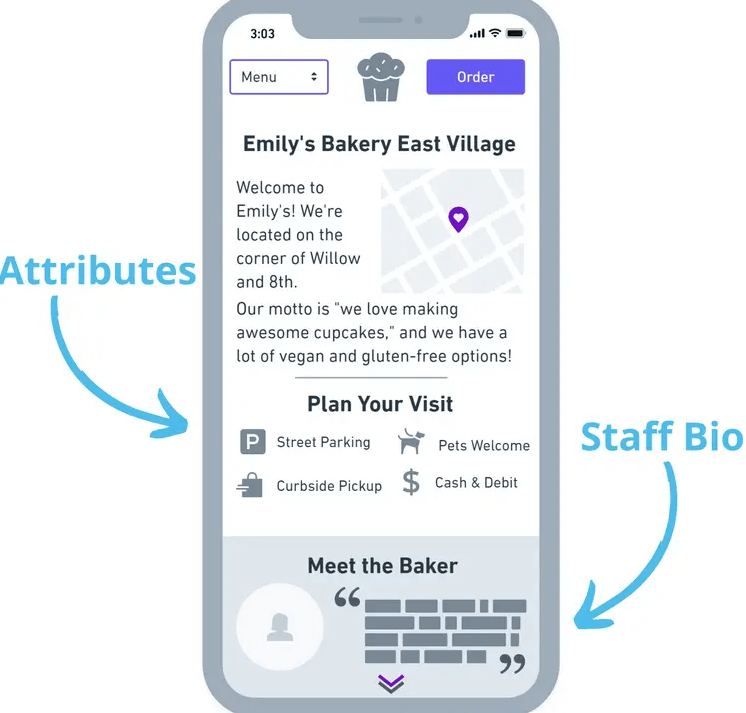
3. Personnel summaries
The staff is one aspect that makes each office (nearly) entirely distinct. To give potential customers and search engines an idea of what to anticipate (and who to expect to be there), it’s a good idea to include the profiles of key personnel.
4. Time of Opening and Closing and Nap (Name, Address, Phone)
Don’t forget to include the most fundamental forms of original material, such as hours of operation and NAP data (name, address, and phone number), on your location pages. Make it simple for visitors to the website to access these details, so they can get in contact with you or find your location with ease. A location’s NAP may also be complemented with a handy integrated map.
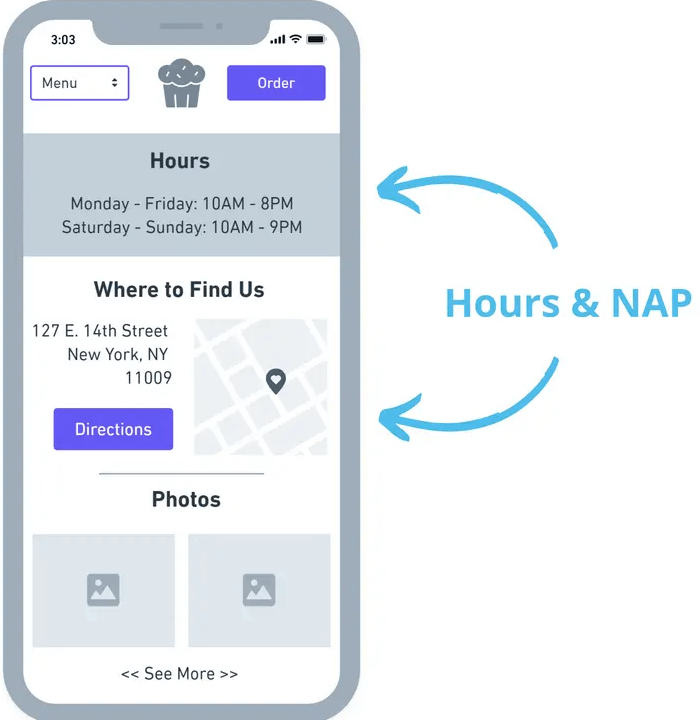
5. Images
Pictures of the area on your website (and GBP for that matter). Should be a picture taken where the website is talking about. Don’t use stock photos that seem like storefronts but aren’t genuine storefronts. Include images that show clients what they may expect when they visit the shop (inside and out).
Customers who find your business online and decide to visit it in person are more likely to be dissatisfied, puzzled, or upset if the photographs don’t reflect reality. This is true for both your human and algorithmic audiences.
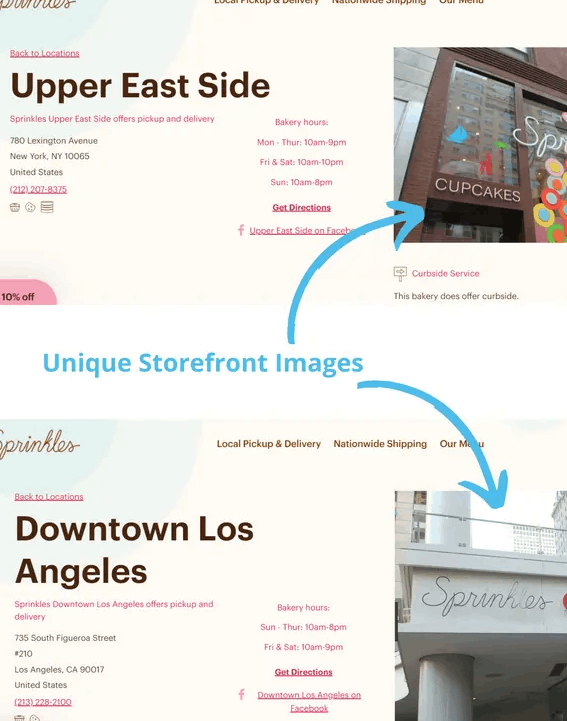
Obviously, you wouldn’t want to use stock photographs on your location pages, either.
6. Evaluations – customer statements and reviews
Reviews are a kind of user-generated content that may be shown on your location pages.
Be careful to include reviews that are relevant to the page’s topic, rather than a generic feed of all reviews.
The purpose is to provide prospective clients an accurate depiction of what they might anticipate based on the experiences of others. Reviews written specifically for this site provide another dimension of useful information to the page.
7. Products and stock
I think it would be helpful to provide product information or an inventory feed on each store’s website, even if the things sold are same across stores.
Inventory information is another sort of distinctive value content since your clients only care whether a product or service is available locally.
8. Locations in the Neighborhood
If you have many stores in close proximity to one another, you’ll benefit greatly from being in a nearby location. They are an additional way to differentiate your location pages from the competition.
You may include them separately or combine them with an existing map. For the sake of clarity for visitors who have landed on this page in search of instructions, I like to provide them their own portion of the page.
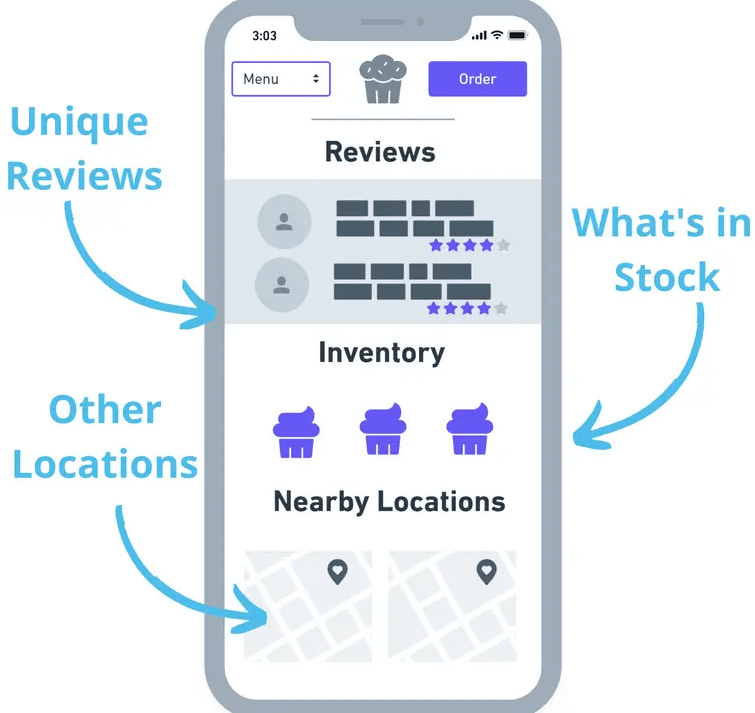
9. Promotional and discounted prices
Promotions and discounts need not be exclusively site-specific. This would be illogical of me. However, discounts and deals that are unique to a certain area might be a great way to give local shoppers a boost. One method of doing this is to organize coupons, discounts, promotions, etc. by state or city.
10. FAQs
In my experience, frequently asked questions are one of the best methods to generate original and in-depth material for use on regional landing pages. Many sites I’ve visited include a section dedicated to frequently asked topics, however the solutions provided are often quite general.
Add frequently asked questions to your regional landing pages by asking queries that will evoke a one-of-a-kind answer. It’s best if you could avoid asking yes/no questions unless you want to elaborate on the responses you get.
Generic:
- Do you provide any vegan options?
- The correct response is “We provide vegan and gluten-free alternatives at all of our locations!”
Exclusive Benefits:
- Is it possible to take a bus or train to your desired destination (Location)?
- A: “Of course you can!” Our location is about a five-minute stroll away from the designated bus stop. You may find us on the right if you travel toward “street,” then make a left turn at “street.”
11. Agencies and Provisions
The same is true for departments and services, which may or may not have original material. Clear divisions exist for certain businesses (automotive dealerships, for instance): Services including sales, finance, and maintenance are provided.
This content type isn’t as intuitive for other kinds of businesses. For instance, a bakery company may include services on their store locator sites to specify which stores provide cup cakes in addition to their regular offerings.
This is similar to the value of inventory in that as a consumer, all I care about is whether or not the store closest to me has the item I need.
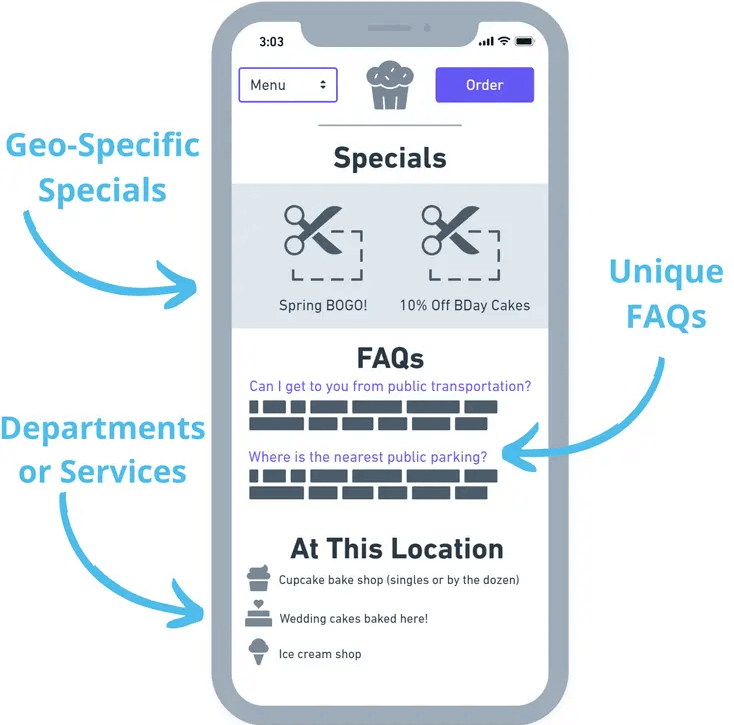
An Explanation of What Structured Data Is
Schema (also known as structured data) is programming that describes the data on your website to search engines. Schema is often invisible to users and only visible to search engines (with the exception of rich results).
There are two major benefits of having a well-defined schema:
- This aids search engines in comprehending the interconnectedness of your company’s many components.
- Clarity by avoiding the inherent ambiguity that arises from using keywords (and language).
The term “Apple” on a webpage might refer to either the fruit or the popular phone. Context is essential for understanding, and language alone isn’t enough. If you use schema to mark up your content, Google will have no room for mistake in interpreting it.
As an added bonus, using structured data may increase your chances of receiving featured snippets, such as those including ratings and reviews of a product.
Recommended practices for the Location page Schema
There are a few things to remember when using schema markup on location pages.
First, ensure you’re using a wide variety of appropriate schema types. You shouldn’t just add Local Business schema to the website if you’ve already optimized it with custom graphics, frequently asked questions, and staff biographies. Use as much markup as possible to provide Google with useful information about your page. Keep in mind that search engines can’t index or rank your material unless they can decipher it.
Second, choose the most particular schema format to employ. There are 145 distinct business schema types listed under the “LocalBusiness” schema category. Rather of the more general “Local Business” schema, dentist offices should instead use the more specific “Dentist” model, while restaurants should use the (guess what?) more specific “Restaurant” schema.
Conclusion
It takes time, energy, and some ingenuity to create location landing pages that are worth their weight in gold. When going through the aforementioned components, don’t skip over the ones that may appear the most challenging or time-consuming. Your rivals have already begun doing just that.
Instead, focus on the benefits you can provide your clients. This is especially important if your competitive edge relies on non-scalable tactics.
Keep learning SEO:
Web 2.0 Backlinks [ULTIMATE GUIDE] #1 Ranking
Free Backlinks You Can Get Right Now